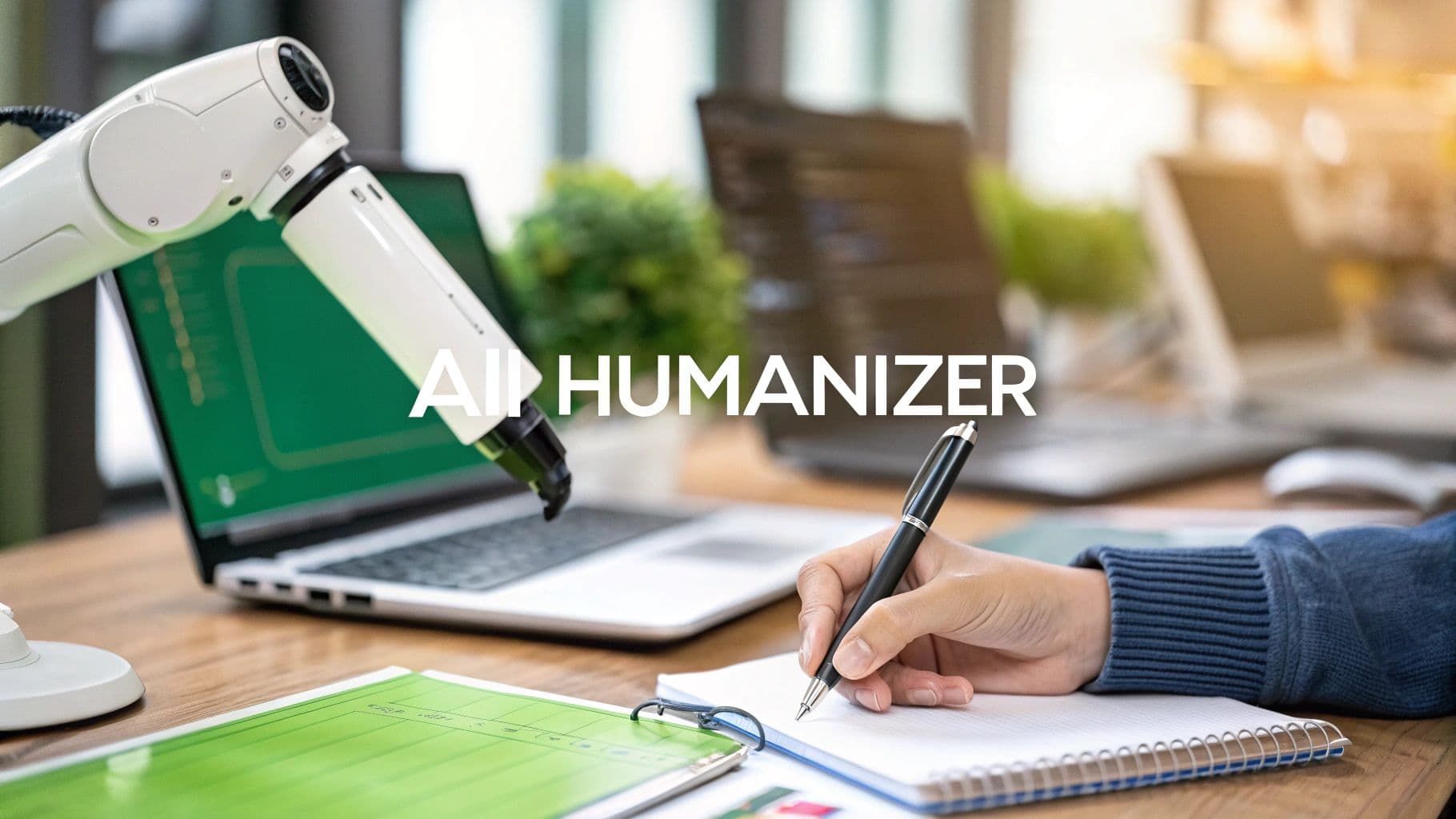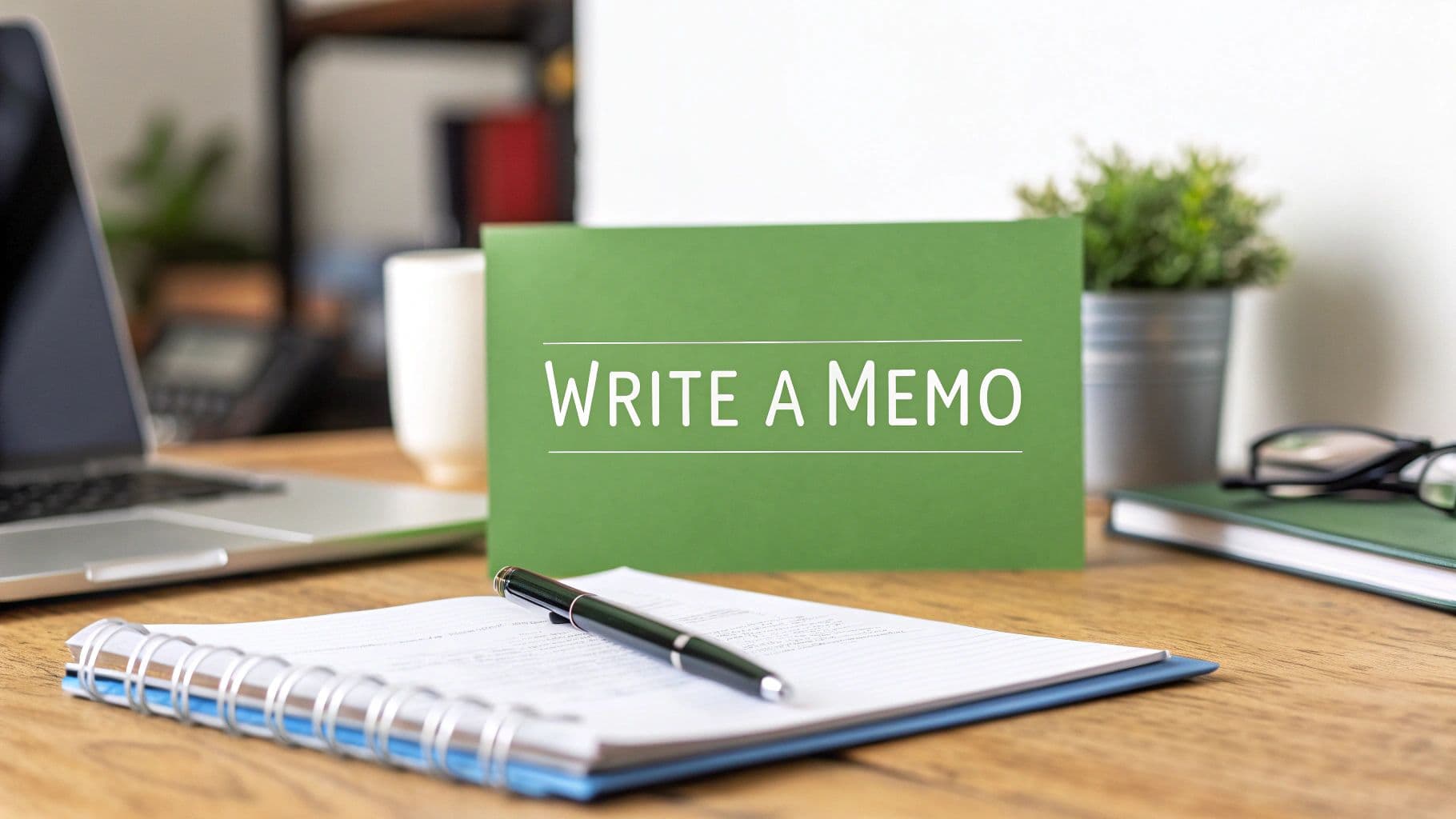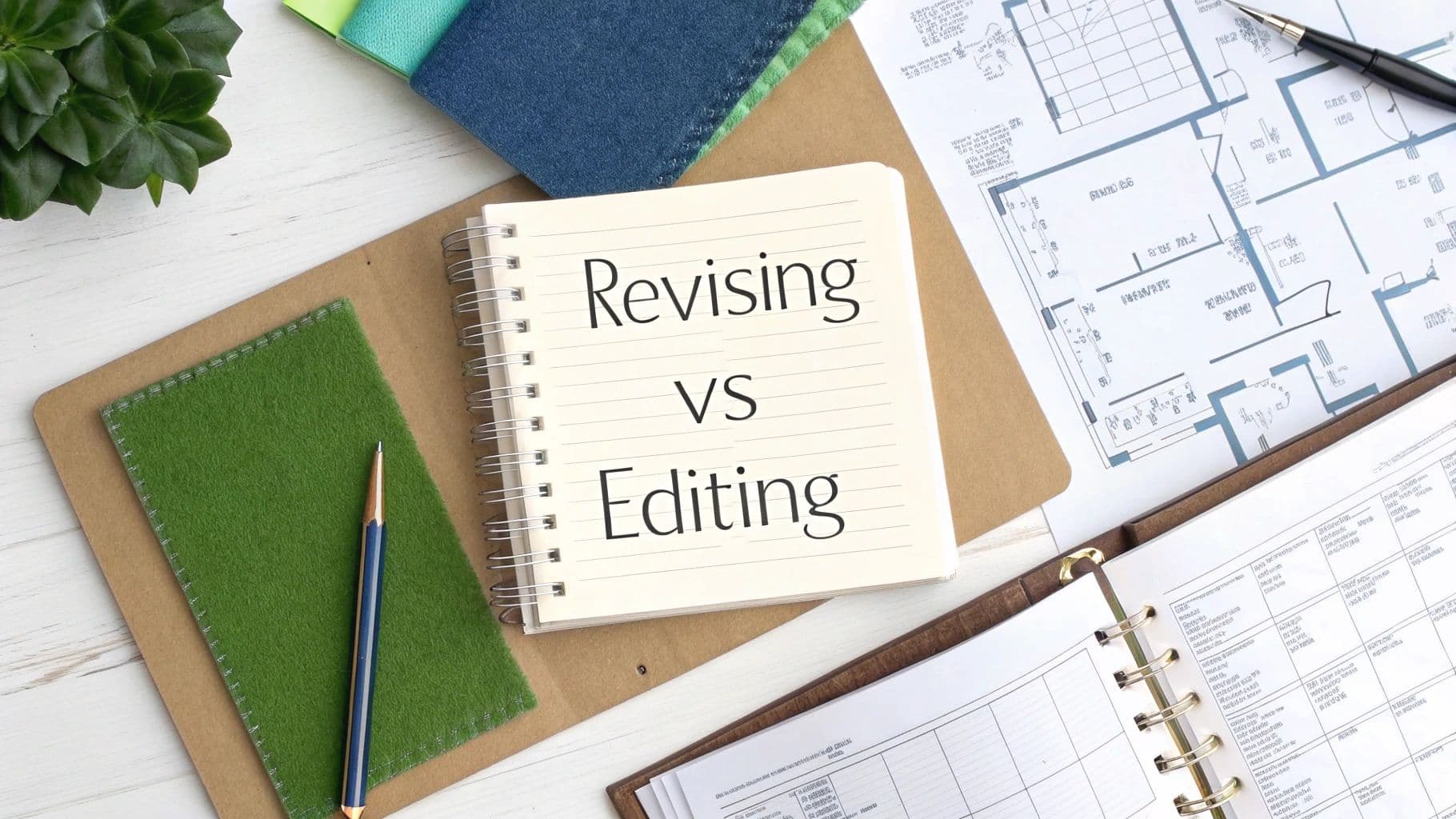
Can Turnitin Detect ChatGPT and AI Writing?
September 23, 2025
So, can Turnitin actually detect ChatGPT?
The short answer is yes.So, can Turnitin actually detect ChatGPT?
The short answer is yes. Turnitin has a built-in AI detector specifically designed to flag content written by large language models like ChatGPT. But it's not a simple "yes" or "no" answer.
Instead of giving a definitive verdict, the system provides a percentage score. Think of it as an indicator, not an accusation. It's meant to give educators a heads-up, suggesting how likely it is that the text was generated by AI.
How Does Turnitin's AI Detection Actually Work?
To get a handle on how Turnitin spots AI, it helps to understand the best AI writing tools available today. These models, while powerful, often leave behind subtle "linguistic fingerprints"—patterns in word choice, sentence structure, and rhythm that a trained eye (or algorithm) can pick up.
Turnitin’s detector isn't just looking for copy-pasted text like a traditional plagiarism checker. It’s analyzing the style of the writing itself, searching for those tell-tale signs of machine generation.
The whole system was built to help instructors navigate the new world of generative AI in their classrooms. The goal isn't to automatically fail students, but to provide data that can start a conversation. The report even highlights specific sentences and paragraphs that have AI-like traits, giving educators a place to start their review.
Accuracy and False Positives: The Full Picture
Turnitin rolled out its AI detection feature to tackle academic integrity concerns head-on. The company claims an accuracy rate of about 98%, which sounds incredibly high. This means it correctly identifies AI-written text the vast majority of the time.
But here’s the catch: that 2% gap is where things get tricky.
No system is perfect, and there's always a risk of "false positives"—where completely human-written text gets mistakenly flagged as AI. This is exactly why that AI score should be seen as a piece of the puzzle, not the final proof. It’s a tool meant to support a teacher's judgment, not replace it.
To give you a quick summary of what Turnitin’s AI detector brings to the table, here’s a simple breakdown.
Turnitin AI Detection At a Glance
| Feature | Description |
|---|---|
| Percentage Score | Provides a likelihood score (0-100%) of AI generation, not a definitive verdict. |
| Sentence Highlighting | Pinpoints specific sentences and passages that exhibit AI-like writing patterns. |
| Educator-Focused | Designed to be a starting point for conversation and review, not an automatic penalty. |
| High Claimed Accuracy | Turnitin reports an approximate 98% accuracy rate in identifying AI-generated text. |
| Risk of False Positives | The system is not foolproof; human writing can sometimes be incorrectly flagged. |
Ultimately, while the technology is impressive, it's still just one data point in a much larger academic process. Context, conversation, and human oversight are still the most important parts of maintaining academic integrity.
How Turnitin’s AI Detector Works
Think of Turnitin's AI detector less like a plagiarism checker and more like a linguistic detective. It’s not looking for copy-pasted sentences. Instead, it analyzes the very DNA of the writing to spot the "fingerprints" that AI models like ChatGPT tend to leave behind.
This system didn't just appear overnight. It was trained on millions of documents, a massive library of both human-written and AI-generated text. This deep training is what allows it to recognize the subtle, almost invisible patterns that scream "machine-written."
Turnitin’s technology is powered by an in-house model trained on text from GPT-3, GPT-3.5, GPT-4, and other similar large language models. While its main strength is in English, they are working to expand support for other languages to keep up with global academic needs.
The process is pretty straightforward, as this visual breakdown shows.

As you can see, Turnitin runs the paper against its massive database to generate a report—a method that works for both old-school plagiarism and new-wave AI detection.
The Linguistic Clues It Looks For
So, what exactly is this digital detective searching for? It’s all about spotting patterns that are statistically rare in human writing but pop up all the time in AI-generated text.
These AI "fingerprints" often include things like:
- Unnatural Consistency: AI models often produce sentences with suspiciously uniform length and structure. Real human writing is messier and more varied.
- Predictable Word Choices: Because AI is designed to pick the most probable next word, its writing can be grammatically flawless but creatively flat. It lacks the spark and originality of a human writer.
- Lack of Rhythmic Variation: Human writing has a natural cadence. AI text can feel a bit too perfect, missing the pauses, shifts, and quirks that come from a real person's thought process.
The system spits out a percentage score based on how many of these AI markers it finds. A high score suggests a strong possibility of AI involvement, but it’s not meant to be definitive proof. It's an indicator—a red flag—to prompt a teacher to take a closer look.
If you want to get into the nitty-gritty of the technology, understanding how AI detectors work in a broader sense can shed more light on Turnitin's approach. For an even more detailed breakdown, we’ve put together our own guide on https://naturalwrite.com/blog/how-does-an-ai-detector-work.
What an AI Detection Report Actually Shows
When Turnitin flags a paper for possible AI use, it doesn't just send up a vague red flag. It generates a detailed report meant to give educators a closer look at the submission—think of it as a tool for investigation, not an automatic guilty verdict.
The main feature is the AI writing indicator score, a percentage from 0% to 100%. This number is all about the model's confidence level. A high score suggests a strong chance the text was AI-generated, but Turnitin is quick to point out that a human needs to interpret that score in context.
Decoding the Highlights
Beyond that main score, the report dives deeper, breaking the paper down segment by segment. It highlights specific sentences or even whole paragraphs that have the classic tells of AI writing, letting an instructor zero in on the most questionable parts of the text.
Here’s a glimpse of what an instructor sees.

The blue highlighted text, along with the overall score in the side panel, gives educators a clear map of where the AI patterns are clustered. This level of detail is key. It helps them tell the difference between a paper where AI was maybe used for a bit of brainstorming versus one that looks like it was almost entirely machine-written.
The report is intentionally designed to be a conversation starter. It gives an educator specific data points they can use to talk with the student about their writing process, rather than jumping straight to an accusation.
This is a totally different game than a simple plagiarism check. If you want to see how this compares to the old-school approach, you can learn more about what a Turnitin similarity score means and how it works. The whole point is to support academic integrity with real evidence, giving educators the tools to make fair, informed decisions based on all the information—not just a single number.
False Positives and Other Glitches in the System
Look, no detection tool is perfect, and Turnitin’s AI detector is no different. It’s a powerful piece of tech, but it works on probabilities, not certainties. That simple fact opens the door to some major limitations that both students and educators need to get their heads around. The biggest issue? False positives.
A false positive is when the system flags completely human-written text as AI-generated. It happens more than you'd think. Highly structured writing, like you’d find in a lab report or a technical paper, can sometimes look a lot like the logical, predictable patterns an AI would spit out.
It's not just technical writing, either. I've seen text from non-native English speakers get flagged for the same reason. Their writing might follow the grammar rules they learned in a textbook a bit too perfectly, and it ends up lacking the natural rhythm and casual feel the algorithm expects from a native writer.
The Flip Side: False Negatives
Then you have the opposite problem: false negatives. This is when AI-generated text sails right through the detector without a single red flag. If a student is smart about it—heavily rephrasing ChatGPT’s output, weaving in a few personal stories, or even just tossing in a couple of intentional quirks—they can often drop that AI score down to nothing.
So, you end up in this tricky spot. A system that’s too sensitive can wrongly accuse an honest student, but a system that isn't sensitive enough will miss a dishonest one.
The bottom line is this: an AI detection score should never be treated as the final word. Think of it as just one piece of evidence in a larger investigation. It’s a starting point that needs a real human to apply critical judgment and context.
Why Context Is Everything
This is why understanding these limitations is so crucial for fair grading. An AI score just doesn't tell you the whole story. A good instructor has to consider the student's previous work, their typical writing style, and what the assignment was even about. So when you ask, "can Turnitin detect ChatGPT," the answer is yes, but with some big asterisks.
Here are a few things that can throw the detector off and lead to a bad flag:
- Technical Subjects: Writing that’s packed with standard definitions and formal language.
- Creative Writing: Sometimes, a unique poetic or stylistic choice can look weird to the algorithm.
- Polished AI Text: Content that’s been carefully paraphrased and "humanized" can easily slip through.
At the end of the day, this technology is an assistant, not a judge. The numbers it produces have to be weighed carefully against everything else. The final call should always come from a holistic review of a student’s work, not just a percentage on a report.
How to Use AI Ethically for Academic Work

Let's get one thing straight: the conversation around AI in school isn't just about "not getting caught." It's about using these powerful tools the right way.
Instead of seeing ChatGPT as a shortcut to a finished paper, think of it as a smart assistant—something to help you sharpen your own ideas, not replace them. This simple shift in mindset changes everything. It turns fear into empowerment.
This is a pretty important distinction, especially with schools scrambling to react. ChatGPT shot up to over 180 million users in what felt like an overnight explosion, and that pushed institutions everywhere to adopt detection software. With so many students having access to AI, knowing where the ethical lines are drawn is more critical than ever. You can learn more about the trends shaping AI detection policies at Undetectable.ai.
The trick is to use AI to kickstart your critical thinking, not to outsource it. When you treat it as a collaborator for the early stages of your work, you stay in the driver's seat and keep your academic integrity intact.
Your Playbook for Responsible AI Use
So, how do you actually use AI as a study partner without crossing into sketchy territory? It all comes down to focusing on the process, not just the final product. The goal is to make your own work stronger and more insightful.
Here are a few ethical ways to bring AI into your workflow:
- Brainstorming and Idea Generation: Feeling stuck? Use ChatGPT to explore different angles on a topic or generate a list of potential arguments. You can even ask it to play devil's advocate to help you spot counterarguments you might have missed.
- Creating Outlines: A solid outline is the skeleton of any great essay. Ask ChatGPT to help you organize your thoughts into a logical flow. From there, you can flesh it out with your own research and analysis.
- Simplifying Complex Concepts: If you're wrestling with a dense academic theory, have an AI explain it in simpler terms or come up with an analogy. This is a fantastic way to build a real, foundational understanding of tricky material.
- Grammar and Style Checks: Think of AI as an incredibly advanced proofreader. It can catch awkward phrasing or grammatical slip-ups, helping you polish your final draft while ensuring the core ideas remain 100% yours.
Ethical vs Unethical Use of ChatGPT for Schoolwork
To make it even clearer, let's break down what's acceptable and what crosses the line into academic misconduct. Using AI as a tool to help you think is one thing; letting it do the thinking for you is another.
| Ethical Use (Learning Assistant) | Unethical Use (Academic Misconduct) |
|---|---|
| Brainstorming topics and generating keywords. | Copying and pasting entire paragraphs or essays. |
| Creating a basic outline for an essay. | Submitting AI-generated text as your own work. |
| Getting simple explanations for complex ideas. | Using AI to answer quiz or test questions. |
| Checking for grammar, spelling, and style errors. | Falsifying data or sources with AI. |
| Rephrasing your own sentences for clarity. | Ignoring citation and attribution requirements. |
Ultimately, the line is drawn at originality and effort. If the critical thinking, analysis, and final words are yours, you're likely in the clear. If the AI is doing the heavy lifting, you're venturing into risky territory.
By using AI for these foundational tasks, you ensure the final submission reflects your own critical analysis and voice. This method is not only ethical but also helps you learn the material more deeply. Check out our guide on how to avoid plagiarism for more strategies on maintaining originality in your work.
Got Questions About Turnitin and AI? We’ve Got Answers.
When you're dealing with AI detection, it's natural for a bunch of questions to pop up. Let's clear the air and tackle some of the most common ones about how Turnitin handles AI-generated text.
Can Turnitin Detect AI Tools Besides ChatGPT?
Yep. Turnitin isn't just looking for ChatGPT's digital fingerprints. Its detection model is built to spot the telltale signs of writing from most large language models (LLMs).
Think of it this way: different LLMs might have their own quirks, but they all share a similar "accent." Turnitin is trained to pick up on that accent—things like predictable sentence structures, a certain kind of word choice, and an unnaturally smooth flow. That means it’s just as likely to flag content from Google's Gemini or Anthropic's Claude as it is from ChatGPT.
What if I Edit the ChatGPT Text? Will It Still Get Flagged?
It really comes down to how you edit. A few quick word swaps or rephrasing a sentence here and there? That’s probably not enough. The AI’s original structure is still lurking underneath, and the detector will likely see it. Superficial changes rarely do the trick.
But if you do a heavy rewrite, that’s a different story. We're talking about completely restructuring sentences, injecting your own analysis and perspective, and blending the ideas into your unique writing style.
Key Takeaway: The more you truly make the text your own, the less it looks like AI. Think of AI as a brainstorming partner, not a final writer. The finished product needs to be a reflection of your thinking.
My Original Work Was Flagged as AI. What Do I Do?
First, don't panic. An AI score isn't a final verdict; it's just a flag for a human to review. And yes, false positives happen.
Your best move is to talk to your instructor right away. Come prepared to show them your writing process, because that’s the best way to prove the work is yours.
Here’s what you can bring to the conversation:
- Your research notes: Show them where you started and the information you gathered.
- Outlines and drafts: Nothing says "I wrote this" like a messy first draft and a clear outline.
- Version history: If you used Google Docs or Microsoft Word, your version history is your best friend. It’s a minute-by-minute log of your writing journey.
Walking them through your process is the strongest defense you have. Most schools have a fair system for these situations, and showing your authentic work is the key to clearing things up.
Ready to make sure your writing sounds genuinely human? Natural Write can help you polish AI drafts, turning them into natural, authentic text that flows past detectors. Humanize your content in one click at https://naturalwrite.com.


